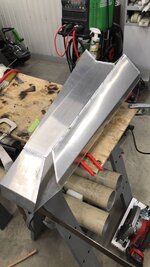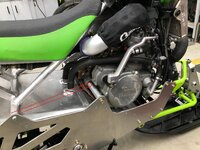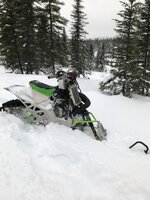Did you get any more snow yet for further testing?
Yes I have done few more little test, we have enough snow so I can just pull it out and go direct from the house so it is easy now! The upgraded cooling system with the tunnel cooler and thermostat is just perfect now. The now coupled rear suspension keep the font end on the ground, we will see If I need to add some preload in the deep stuff when we get some. For the rest, everything is just working as it should! I have a bit of an hard time keeping all the bolts on the bike but it is managable with a good amount of loctite thread locker.
Right now I'm on building a new tank on the tunnel to increase the fuel capacity from 6L to 18-20L. Most of the tank is done, the hard part is to find a way to fill the small tank with the bigger one... I need a pump to transfer the fuel with an overflow that drain back in the big tank or a little pump that I can turn on when needed. The best way would be a standard diaphragm pump with an overflow but this solution need a crankcase vaccum port that I dont have.... maybe when I doa rebuild I will go this route. But for now I think I will simply put a small electric fuel pump with a switch to fill it up when needed. I will need a small battery pack anyway for an headlight.
Feel free to let me know if someone have an idea about an other way to trasnfer the fuel.... The top tank is maybe 12in higher.
Here is a few seconds of clip that I have from the last test.








